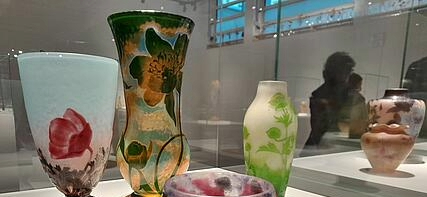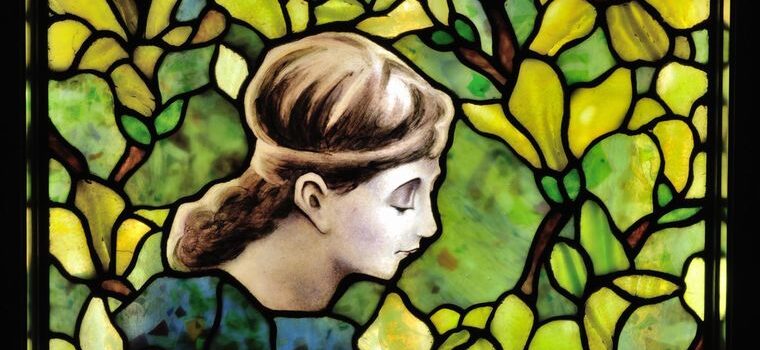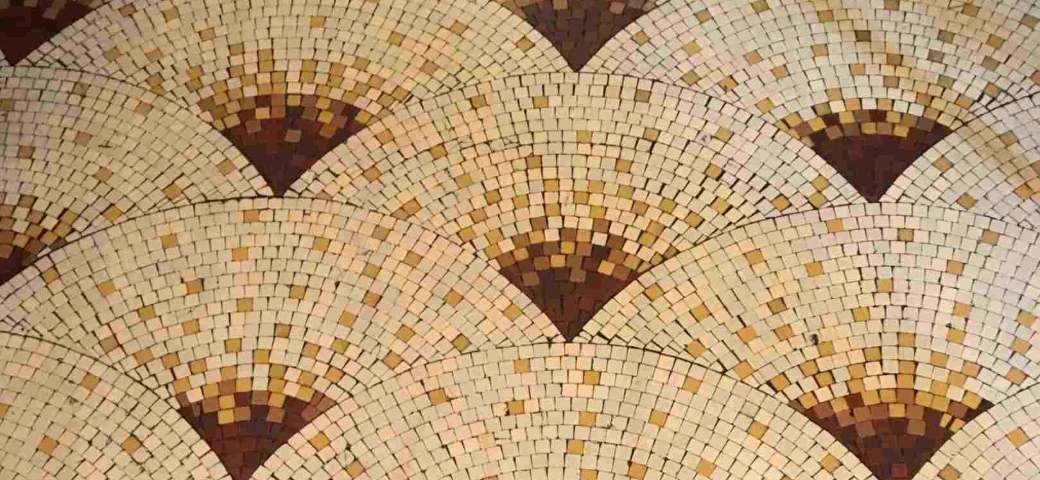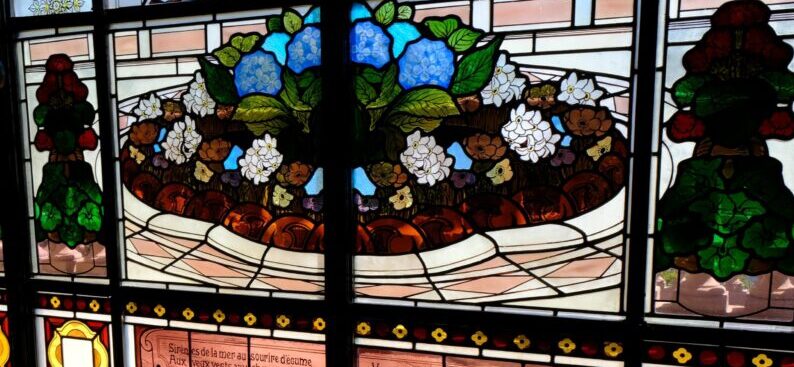It’s essential to acknowledge that while human life obviously outweighs any artistic movement, the fate of Art Nouveau and Art Deco provides a critical, though often neglected, historical lesson. These styles weren’t gradually replaced; they were violently terminated by global conflicts. World War I killed Art Nouveau by replacing its expensive, cosmopolitan fantasy with the harsh demands of nationalism and austerity. World War II delivered the fatal blow to Art Deco by ensuring it was ideologically condemned in the postwar period as a decadent symbol of the capitalist past. This direct link between political upheaval and aesthetic rupture is why these dominant movements vanished so abruptly. While World Wars silenced beauty, their true horror lies in the human cost: an estimated 20 million lives lost in WWI and a staggering 60 million in WWII.
The Art Nouveau movement (known regionally as Secession, Jugendstil, or Modernismo), which flourished internationally from the 1890s until around 1914, was effectively terminated by the social, economic, and ideological shifts associated with the First World War. Art Nouveau was rooted in the aim to create a truly modern style, reflecting the consciousness of the aging century and seeking to bring art into direct contact with life, often manifesting as a “return to nature.” The movement emphasized integrating structure and decoration, often highlighting structure as the prime purpose of ornament. For instance, Victor Horta’s buildings, such as the Maison du Peuple, relied on an exposed iron structure and the principle of honesty in architecture, though the ornamentation often only rhetorically suggested a structural role.
However, even before the outbreak of war, critiques existed regarding the style’s aesthetic direction and purpose. Though the movement itself arose from a reaction against the excessive historicism of the 19th century, its love for decoration often drew its own criticism. Critics argued that some expressions of the “new direction” led to perplexing or confusing structures, identifying modernity primarily with the highly decorative Secessionism. Furthermore, prominent architects like Otto Wagner were already articulating the need for a “modern architecture” that would fully reflect modern life, often emphasizing utility (Zweckmässigkeit) and practical requirements. This intellectual current, visible in the Vienna Secession building itself, signaled a move toward abstraction and shared geometric proportions. By the early 20th century, some Art Nouveau designers, such as Josef Hoffmann, were already moving away from the characteristic “wavy line” towards a more rectangular ornamentation, forecasting the style that was to come.
Crucially, in Central Europe, Art Nouveau also gained explicit ideological functions tied to nationalist identity building. For nations under the Habsburg Monarchy, the Secession meant not only purification from historical styles but also liberation from foreign (German, Austrian) influences. This intensely national focus likely fragmented the international cosmopolitanism of Art Nouveau, paving the way for styles that could express a new national reality, especially after the collapse of the empires following the war. When the start of World War I came, it marked the immediate end of this “first period” of Art Nouveau. The ensuing social, economic, and political devastation created an environment where the highly decorative, handcrafted elements characteristic of many Art Nouveau works—such as elaborate furniture, glasswork, and carved ivory statuettes—were incompatible with the new reality of austerity and mass production. The postwar period immediately saw architects focusing on practical solutions related to national identity, replacing the complex, costly, fin-de-siècle aesthetic with a new focus on pragmatism and monumentality.
Following the expressive, curvilinear Art Nouveau, Art Deco flourished primarily during the Interwar period (1920s–1930s) with its focus on modern, often sleek and industrial aesthetics, utilizing materials like marble, bronze, and ivory. While the immediate aesthetic shift away from Art Deco toward more austere Modernism (like the International Style) happened before 1939, World War II established the ideological and economic conditions that ensured the style’s swift abandonment and postwar denigration. The sources primarily highlight the dramatic ideological rejection that characterized the post-WWII era, particularly in Central and Eastern Europe.
After 1948, the imposition of the proletarian dictatorship in places like Hungary, following the Soviet pattern, resulted in a deliberate attempt to “wipe out everything that was associated with what it stigmatized as bourgeois traditions.” Art Deco, as the predominant luxury and commercial style of the capitalist interwar years, fell squarely under this condemnation. This hostile ideological milieu was “less favourable for subsistence of cultural values” and severely hampered heritage preservation efforts for modern sites. This led to the neglect and even demolition of architectural heritage from the early 20th century; while the Art Nouveau heritage suffered deeply from this lack of protection in the mid-20th century, Art Deco structures, which represented the immediate pre-Communist past, were similarly vulnerable to being destroyed or left in a miserable condition due to political forces and speculation. In summary, Art Deco items flourished in the interwar years, but the global conflict’s aftermath led to a fundamental ideological break, especially in the Soviet sphere, where the style was ideologically condemned as representing the “bourgeois traditions” the new regimes sought to eradicate, thereby ensuring its demise as a contemporary movement.
The termination of Art Nouveau by World War I was driven by a confluence of economic necessity and profound ideological shock. The style’s core tenet—the Gesamtkunstwerk (Total Work of Art) and its heavy reliance on labor-intensive craftsmanship—rendered it financially obsolete in post-war Europe. The expense inherent in creating Art Nouveau furniture and glassware, requiring meticulous labor, became simply unfeasible in an austerity-stricken continent. After a conflict labeled the “war to end all wars,” the style’s extravagance and emphasis on luxurious beauty were deemed unsuitable, forcing a shift toward a “useful style” (Nutzstil) that prioritized practical fulfillment, efficient allocation of materials, and the avoidance of “outrageous application of material.”
Beyond economics, the war shattered the optimistic, innocent worldview of the fin de siècle era that had nurtured Art Nouveau. The period before 1914 was quickly romanticized as a lost age of innocence, making the old aesthetic feel utterly irrelevant in the face of cataclysmic horrors. The war also catalyzed a new machine aesthetic inspired by the geometric forms and austere lines of modern weaponry—tanks, airplanes, and ships. This aesthetic favored the sharp retort of the emerging Art Deco style over the nature-obsessed curves of the past. Influential architects like Otto Wagner in Vienna even argued that the “military aspect” of viewing things needed to be expressed to truly reflect the time, asserting that the war would teach avoidance of decorative aberrations and advance a “useful style.” This shift was cemented by increasingly hostile critiques in places like France’s École de Nancy, which intensified post-WWI, branding the Art Nouveau as decadent and representing bad taste.
As mentioned above, the two World Wars acted not merely as historical boundaries, but as active catalysts that violently ended the Art Nouveau movement and set the ideological stage for the eventual abandonment of Art Deco, transforming the global aesthetic landscape through economic, military, and political upheaval. Here we comment on specific details that explain that:
World War I (WWI) and its Impact
The Art Nouveau style, which flourished during the Belle Époque period, ended with the start of the First World War in 1914. The war is described as ushering in a stark new reality and marking the end of the Art Nouveau period through an “industrial slaughter”.
Impact on Art and Architecture:
• Aesthetic Shifts: WWI caused Art Nouveau to become an aesthetic dead-end. The movement’s emphasis on beauty made the highly labor-intensive methods and resulting products expensive, which was unsustainable in post-WWI Europe.
• The Rise of Art Deco: The war inspired a new machine aesthetic based on the designs of modern weaponry such as tanks, airplanes, and ships. This led to the transition toward the Art Deco style, which incorporated geometric and industrial motifs, utilizing more efficient and frugal production systems. The austere lines and cheaper materials of Art Deco were seen as a sharp retort to the previous, luxury-obsessed Art Nouveau generation, whose heyday was romanticized as a lost age of innocence.
• Vienna and Modernism: Discourse on architecture in Vienna was continuously impacted by social, ethical, and aesthetic debates up to the First World War and beyond.
◦ Otto Wagner completed his final building, the Waldschule, in January 1918.
◦ Wagner’s monumental commitment continued during the war, even suggesting the use of a smooth canon shell as a symbolic monument for the multinational empire—a transnational and technically modern representation.
◦ Wagner believed that the war, acting as an educator, would encourage the useful style (Nutzstil) over an “over-cultured state” (Überkultur), ultimately promoting a modern architecture that reproduced the spirit of the times.
◦ Following the war, official outlines for ‘Vienna after the War’ were published by the Austrian Engineers and Architects Association in 1916.
◦ The later design for the Palais des Beaux-Arts in Brussels was created after the First World War.
• Central and Eastern Europe:
◦ In the Czech Lands, the new autonomous Czechoslovakia was proclaimed on October 28, 1918, in the Smetana Hall of the Municipal House of Prague.
◦ The neglect of the vital needs of the population, such as mass housing, was evident after WWI, leading to the unplanned structural transformation of city edge areas.
◦ The modernization of Zagreb accelerated greatly after WWI, with the majority of the city’s blocks being built upon within a decade.
◦ The independence of Czechoslovakia in 1918 led to a new concept of nationalism that turned away from Historicist approaches to advocate for modernity.
◦ World War I brought changes to Nancy, leading to hostile criticism of the École de Nancy. The return of Alsace-Lorraine after WWI marked the end of Nancy’s major position and nationalist regionalism. In Strasbourg, Art Nouveau was completely assimilated with the German Empire in the minds of the people after WWI.
World War II (WWII) and Aftermath
The sources also mention consequences related to World War II:
• Destruction and Loss: The Hôtel Solvay in Brussels suffered damage in 1944 when its stained glass window was destroyed by the impact of a V1 bomb explosion.
• Art Confiscation and Destruction: Many of Gustav Klimt’s artworks were confiscated by the Nazi dictatorship. Fearing that these works would become spoils of war during the advance of enemy troops, it was decided to burn the castle (Schloss Immendorf) where they were stored. Countless artworks, including Klimt’s University ceiling paintings and the draft for Jurisprudence, were lost in the fire.
• Persecution of Artists: After Germany invaded Czechoslovakia in 1939, Art Nouveau artist Alphonse Mucha was among the first people arrested and questioned by the Gestapo for being a “problematic nationalist”. He died shortly after of pneumonia. His large series, The Slav Epic, was buried in drums during the German occupation to protect it, and it was only exhibited again in 1949.
• The Jewish Style Critique: By the 1920s and 1930s, derogatory terms such as style juif (Jewish style) appeared on the European scene as a repulsive appellation for Art Nouveau, especially after WWI in Central Europe.
• Post-War Politics and Architecture: The Museum of Applied Arts in Budapest was considerably damaged during the war. After WWII, the proletarian dictatorship in Hungary (starting in 1948) attempted to eradicate anything associated with “bourgeois traditions”.
The memory and heritage of Art Nouveau were heavily neglected during World War I and II, and for decades after the World Wars, and serious efforts for its preservation and appreciation did not begin until the 1960s and 1970s, spurred by exhibitions and public awareness campaigns. World Wars silenced beauty.






